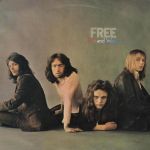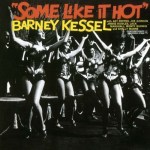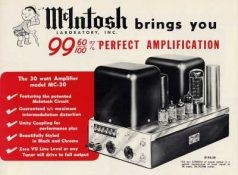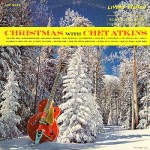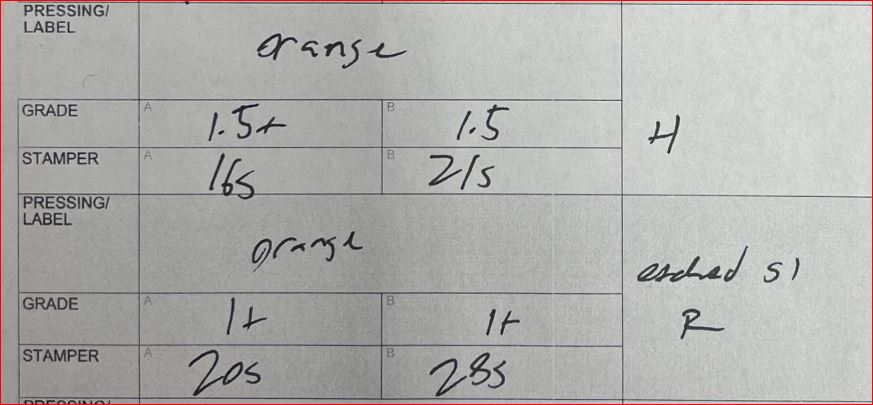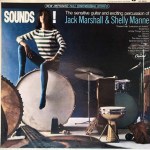
Pink Floyd Hot Stamper Pressings Available Now
Letters and Commentaries for Wish You Were Here
We have added some moderately helpful title specific advice at the bottom of the listing for those of you want to find your own Hot Stamper pressing.
This is the perfect example of everything we look for in a recording here at Better Records: it’s dynamic, present, transparent, rich, full-bodied, super low-distortion, sweet — good copies of this record have exactly what we need to make us audiophiles forget what our stereos are doing and focus instead on what the musicians are doing.
For those of you who aren’t familiar with the album, Pink Floyd managed to record one of the most amazing sounding records in the history of rock music. The song Wish You Were Here starts out with radio noise and other sound effects, then suddenly an acoustic guitar appears, floating in the middle of your living room between the speakers, clear as a bell and as real as you have ever heard. It’s obviously an “effect,” but for us audiophiles it’s pure ear candy.
The Seventies – What a Decade!
Tubey Magical acoustic guitar reproduction is superb on the better copies of this recording. Simply phenomenal amounts of Tubey Magic can be heard on every strum, along with richness, body and harmonic coherency that have all but disappeared from modern recordings (and especially from modern remasterings).
This is some of the best High-Production-Value rock music of the ’60s and ’70s. The amount of effort that went into the recording of this album is comparable to that expended by the engineers and producers of bands like Supertramp, The Who, Jethro Tull, Ambrosia, Yes and far too many others to list. It seems that no effort or cost was spared in making the home listening experience as compelling as the recording technology of the day permitted.
Big Production Tubey Magical British Prog Rock just doesn’t get much better than Wish You Were Here.
A Big Speaker Record
Let’s face it, this is a big speaker recording. It requires a pair of speakers that can move air with authority below 250 cycles and play at loud levels. If you don’t own speakers that can do that, this record will never really sound the way it should.
It demands to be played loud. It simply cannot come to life the way the producers, engineers and artists involved intended if you play it at moderate levels.
This is also the kind of recording that caused me to pursue Big Systems driving Big Dynamic Speakers. You need a lot of piston area to bring the dynamics of this recording to life, and to get the size of all the instruments to match their real life counterparts.
For that you need big speakers in big cabinets, the kind I’ve been listening to for more than forty years. (My last small speaker was given the boot around 1974 or so.) To tell you the truth, the Big Sound is the only sound that I can enjoy. Anything less is just not for me.
Size and Space
One of the qualities that we don’t talk about on the site nearly enough is the SIZE of the record’s presentation. Some copies of the album just sound small — they don’t extend all the way to the outside edges of the speakers, and they don’t seem to take up all the space from the floor to the ceiling. In addition, the sound can often be recessed, with a lack of presence and immediacy in the center.
Other copies — my notes for these copies often read “BIG and BOLD” — create a huge soundfield, with the music positively jumping out of the speakers. They’re not brighter, they’re not more aggressive, they’re not hyped-up in any way, they’re just bigger and clearer.
We often have to go back and downgrade the copies that we were initially impressed with in light of such a standout pressing. Who knew the recording could be that huge, spacious and three dimensional? We sure didn’t, not until we played the copy that had those qualities, and that copy might have been number 8 or 9 in the rotation.
Think about it: if you had only seven copies, you might not have ever gotten to hear a copy that sounded that open and clear. And how many even dedicated audiophiles would have more than one of two clean British original copies with which to do a shootout? These records are expensive and hard to come by in good shape. Believe us, we know whereof we speak when it comes to getting hold of original pressings of Classic Rock albums.
One further point needs to be made: most of the time these very special pressings just plain rock harder. When you hear a copy do what this copy can, it’s an entirely different – and dare I say unforgettable — listening experience. (more…)

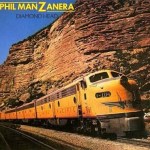
 More Columbia Classical Recordings
More Columbia Classical Recordings

